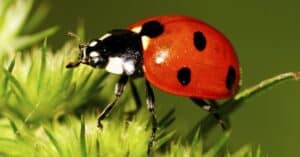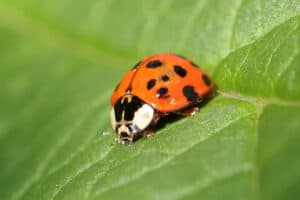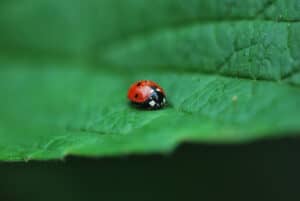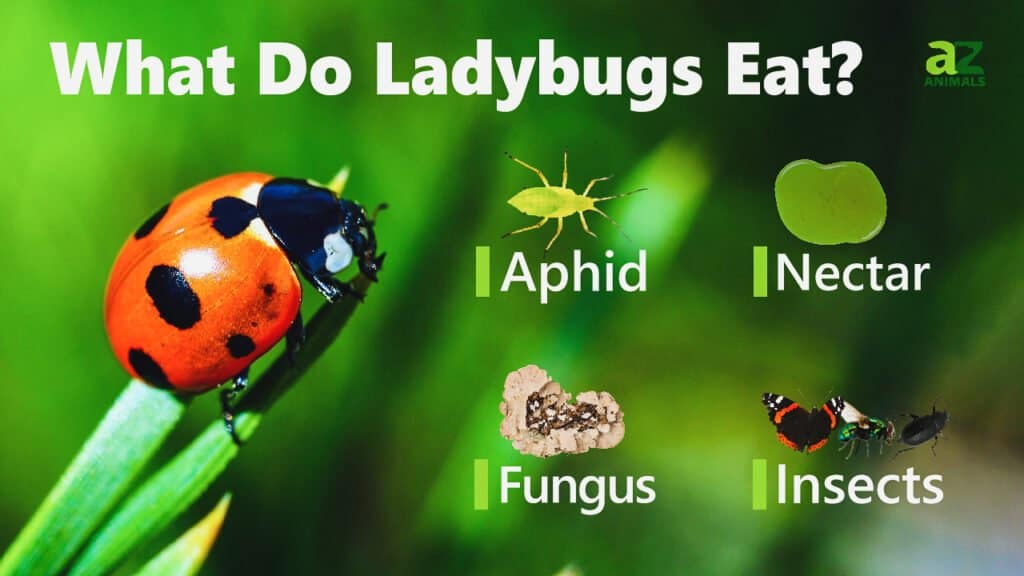
Ladybugs are small round red insects with black spots. They can be other colors, like orange, yellow, and black, but the most familiar species is the seven-spotted ladybug which is red. Ladybugs are sometimes called ladybird beetles or lady beetles; they got their name from farmers who would pray to the Virgin Mary for protection for their crops. When aphids and other pests invaded their crops, ladybugs came in and ate the bugs and saved the crops. Ladybugs are still farmers’ best friends and provide an important role in controlling aphids and other bugs. So we know they eat aphids. What else do ladybugs eat?
How Do Ladybugs Hunt?
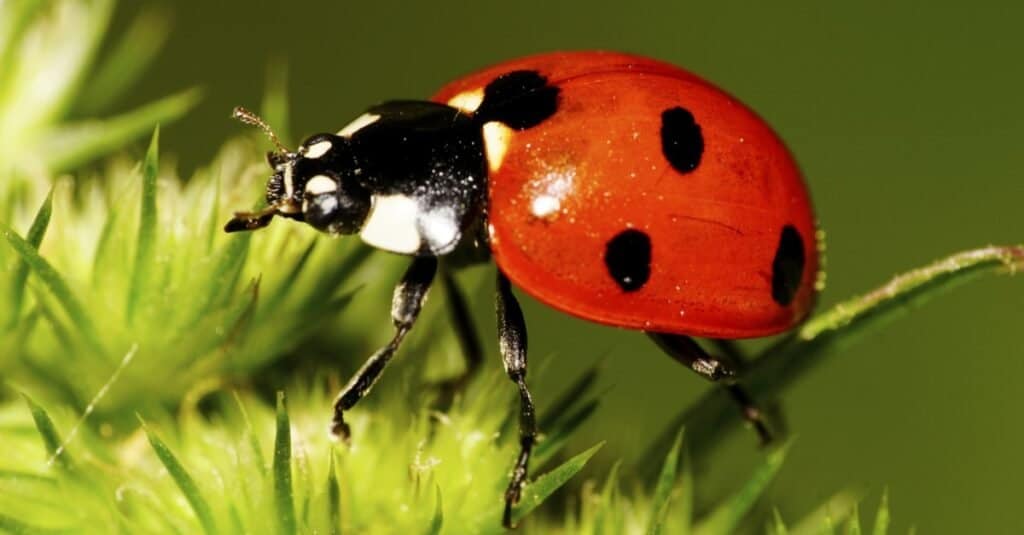
A Caucasian red seven-spotted ladybug with black and white spots on the elytra, long legs, and antennae has risen on legs in green inflorescence.
© Sergey/Shutterstock.com
Out in a field of alfalfa, a colony of 1,000 ladybugs munches away on tiny aphids that are on the leaves. Aphids are wingless, slow-moving bugs, so there is no complex hunt involved. No hiding waiting for an unsuspecting victim to wander by. The ladybug essentially flies in, finds a spot full of aphids, and dinner is served. Aphids will use gravity to fall off the leaves to escape, but since ladybugs can fly, they can still typically find them.
What Do Ladybugs Eat?
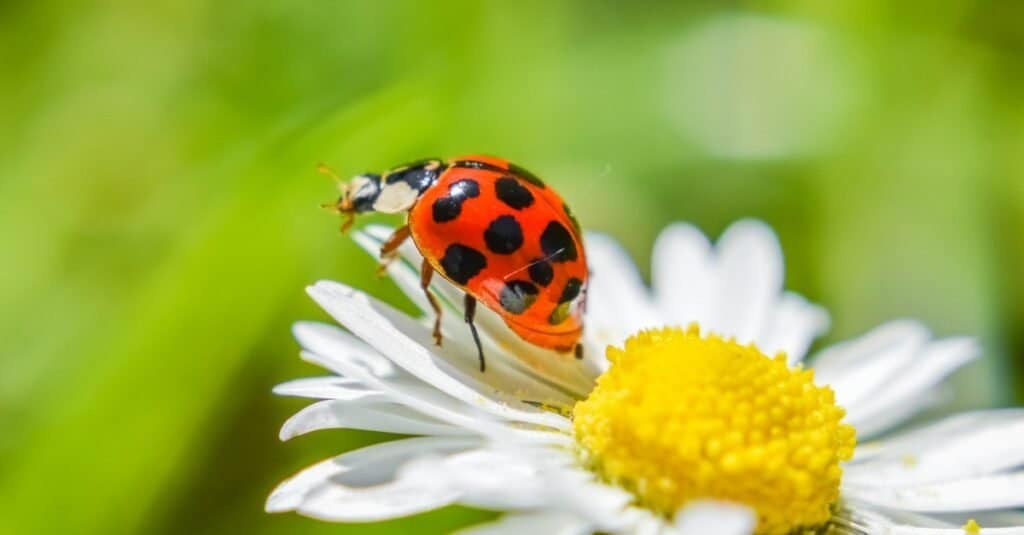
A ladybug on a daisy flower. Female ladybugs can eat as many as 75 aphids in one day. They also like to eat scale, mealybugs, and spider mites.
©iStock.com/sebastianosecondi
Ladybugs primarily eat aphids, a type of small, wingless bugs. This is across species, habitats, and locations. But with 5,000 species of ladybugs, there is some variation. Some species feed on pollen and nectar. Other species feed on plant parts like the stems. Some species, if they can’t find aphids or aphids are absent, can feed on fungus and mildew. Another group will feed on mites. Most ladybugs will eat insect eggs if they come across them as well.
A complete list of what Ladybugs eat:
- Aphids
- Plant-eating bugs
- Mites
- Pollen
- Nectar
- Mealybugs
- Insect eggs
- Mildew
- Fungi
- Fruit flies
- Plants (some species)
How much do Ladybugs eat?
Adult ladybugs eat all day long, are less active at night, and can consume up to 5,000 aphids in their lifetime! The lifespan of a ladybug is 1-2 years.
What Do Baby Ladybugs (larvae) Eat?
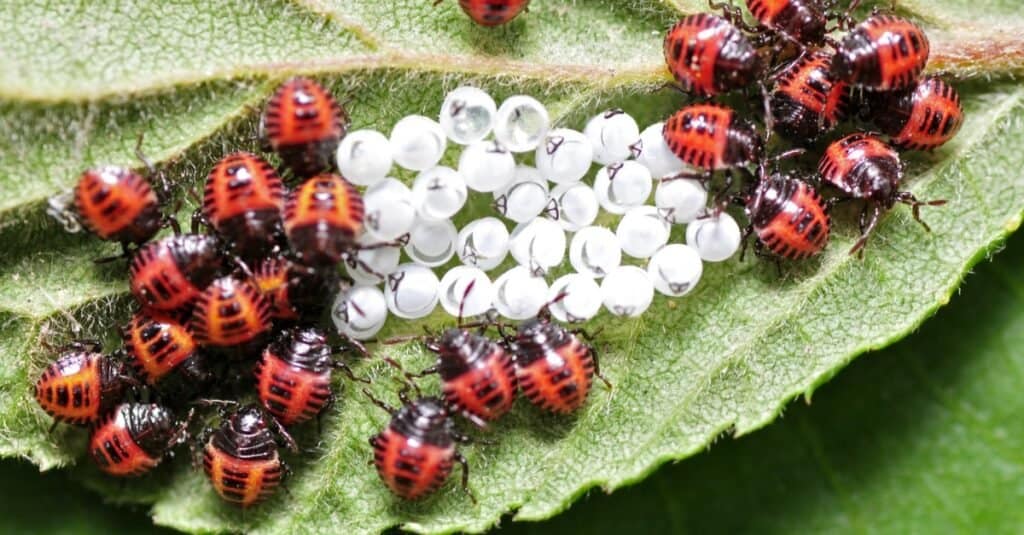
Ladybugs and eggs on a leaf.
©QiuJu Song/Shutterstock.com
Mother ladybugs lay their eggs next to aphids, so when the larvae hatch, they are essentially hatched inside a full-service restaurant. The aphids are right there, and the larvae can begin feeding right away and do they ever. They consume large amounts of aphids over the next few weeks before entering the pupal stage and then the adult stage. Ladybug larvae can consume 300-400 aphids over a 2-3 week period!
What Do Ladybugs Drink?
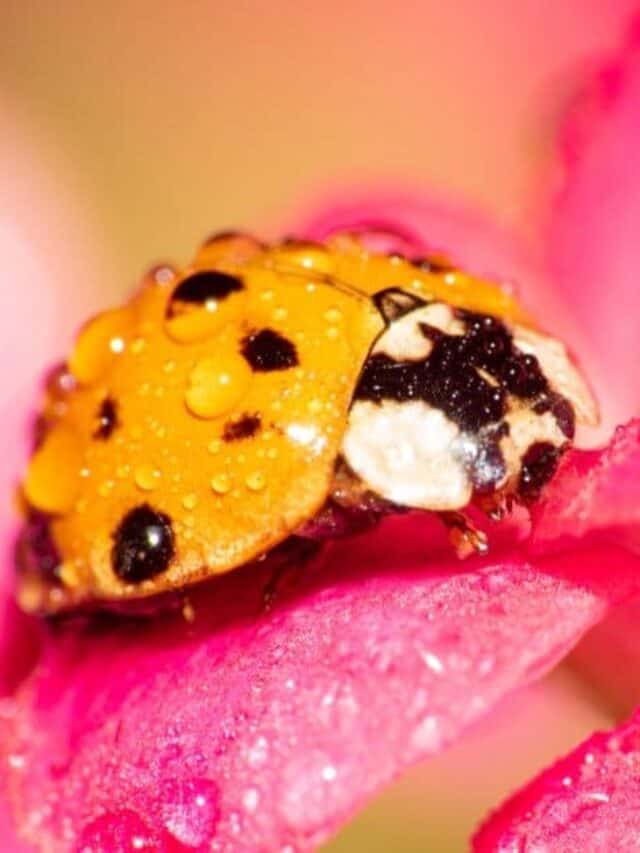
Ladybugs drink the dew off of leaves and flowers.
©iStock.com/Milton Rodney Buzon
Ladybugs drink nectar and water. They also feed on aphid honeydew, which is a sweet liquid that some insects produce after they eat plants. The nectar and honeydew provide the ladybugs with essential nutrients, such as protein, carbohydrates, vitamins, and minerals. Additionally, these fluids help keep their bodies hydrated in dry climates. In addition to drinking liquids from plants and other insects, ladybugs will sometimes seek out small pools of standing water for extra hydration if needed.
What Eats Ladybugs?
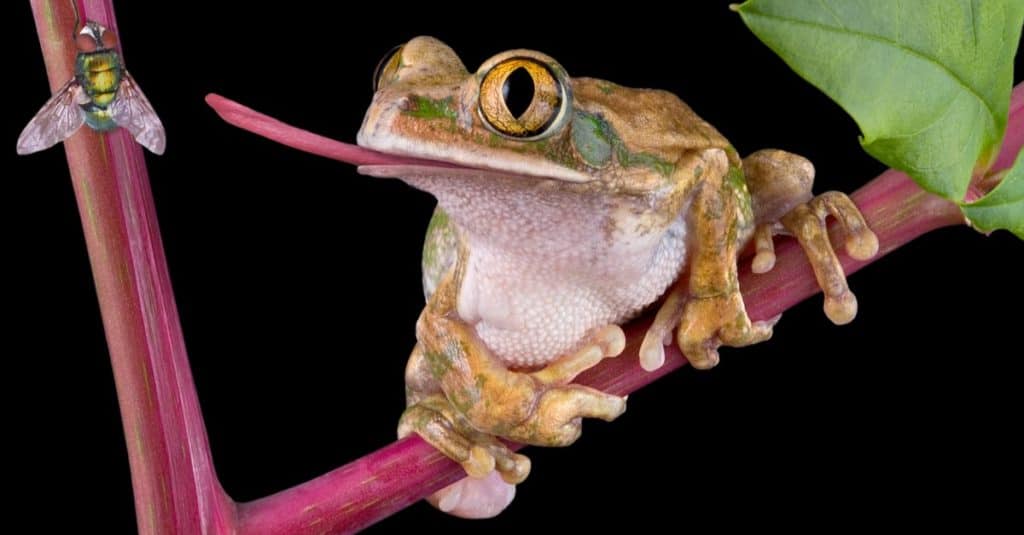
©Cathy Keifer/Shutterstock.com
Their bright colors and spots are a reminder to predators that, like a bad-tasting jelly bean, they taste awful, so don’t eat them! They have glands in their joints that give off an offensive smell, and yet some animals still prey on the ladybugs. What eats ladybugs? The most common predator is birds that can swoop down and eat them, but depending on their habitat, they can be eaten by frogs, dragonflies, and spiders.
What do ladybugs eat in space…wait, what?
NASA performed an experiment with ladybugs and aphids in space! In 1999, a group of astronauts brought four ladybugs with them on the space shuttle to see how gravity would affect the aphids’ ability to escape from the ladybugs. On Earth, aphids simply fall off leaves, using gravity to escape from hungry ladybugs. What would happen in space, in a zero-gravity environment? Teachers and students were encouraged to do similar experiments in their own classrooms and compare results. Did the aphids adapt? Not in this experiment. The ladybugs survived and ate the aphids. But the aphids did leave a legacy of being the first aphid astronauts!
NEXT UP…
- Are Ladybugs Poisonous or Dangerous?
- Ladybug Lifespan: How Long Do Ladybugs Live?
- Where Do Ladybugs Go in the Winter?
The photo featured at the top of this post is © Mironmax Studio/Shutterstock.com
Thank you for reading! Have some feedback for us? Contact the AZ Animals editorial team.



